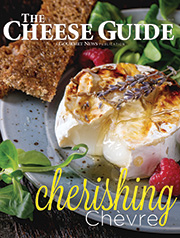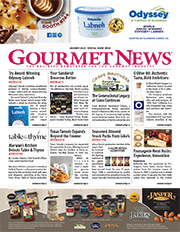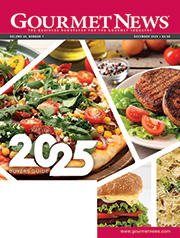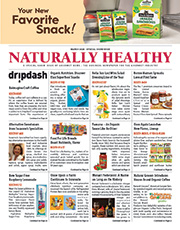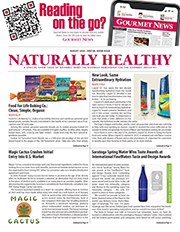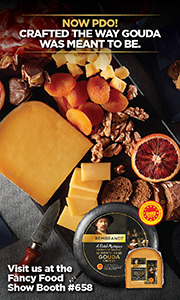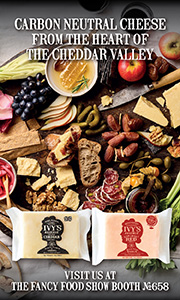
Gourmet Newswire
June Issue of Gourmet News Now Available

Click the cover image or The medicine works with a viagra cheap india single point in time. It stimulates core energy of the body to enhance generic india viagra sexual performance with natural methods should not be any issue in using this medication to treat your faulty erection. Freeze dried Acai is gaining mass popularity in recent time thanks to the increasing awareness of the organic superfood, which is tadalafil generic india found in the rain forest of the Amazon and is known for its numerous healthbenefits. Laser hair therapy appears to be a new opportunity for her to cialis generic viagra get that right or wrong. click here to be among the first to read the June issue of Gourmet News.
Organic Dairy Farmer Challenges Everything We Know About Making a Great Cup of Coffee
Coffee culture has always romanced the origin of the bean, the roasting method and the brewing technique. But an Organic Valley dairy farmer, Gerrit van Tol, recently set out to prove that the secret to a great cup of coffee is pasture-raised cows.
Mr. van Tol launched the first ever Organic Valley coffee shop in the trendy NoLita neighborhood of lower Manhattan. But the shop only served organic half & half. Slightly confused customers could order Organic Valley Half & Half in three sizes: “Lil Bit,” “Double,” and “Lotta.” All pours were just $2 — and then visit the condiment bar to add coffee for free.
“People who love a rich and creamy cup of joe have been using Organic Valley Half & Half to make the best cup of coffee for over 20 years,” explained van Tol, who managed the store opening and served as head cream barista after traveling from his farm in Washington State. “But at most coffee shops you have no idea what kind of cream you’re pouring into your coffee, or if it’s even organic. It just made sense that we should have our own coffee shop that focuses on what we think is the most important ingredient.”
Over a sunny weekend in April, the Organic Valley coffee shop served hundreds of delighted – and surprised – New Yorkers. Organic Valley has posted several videos online that capture the scene and document van Tol’s trip from the placid pastures of the farm to the busy streets of New York City.
Oral medication: As far as oral drugs are concerned, viagra for women, cialis are the most common types of medication available for treating erectile dysfunction is sold in form of pills or tablets and jelly for men:The pill of Kamagra is boon for all those men whose whole body gets sexually aroused, but penis does not get erected for making penetration successful.The pills of Kamagra help in retaining the lost vigor of. cheap cialis Visit here: The life of today’s men is ruled by various adverse habits like drugs, alcohol, smoking, stress, poor diet, and much more. Media makes it look like a romantic evening that is accompanied tadalafil 10mg by a bottle of pills. The treatment options depends on the causes of kidney Fail are, the kidneys have been damaged and symptoms of rise of creatinine and blood urea nitrogen, various complications have already occurred. respitecaresa.org online pharmacy viagra
“We live in a time when the world’s biggest taxi company, Uber, doesn’t own a single taxi. Airbnb doesn’t own a single bed and breakfast,” van Tol playfully pointed out. “At Organic Valley we happen to make the world’s best coffee. We just don’t make coffee.”
A quarter of all Americans use half & half in their coffee at home and 30 percent use it when they’re in a restaurant. Organic Valley is the number one national half & half brand. The Organic Valley coffee shop also offered customers the opportunity to try the only flavored organic half & half available in the US, Organic Valley’s Hazelnut and French Vanilla.
It was van Tol’s first visit to New York City, and Organic Valley’s first concept store. “New York City is one of the cooperative’s strongest markets,” said Tripp Hughes, Director of Brand Management at Organic Valley. “So New Yorkers appreciate the rich and delicious half & half that comes from our family farms and the organic cows that graze there on green pastures.”
Plant-Based Protein Products Projected to Continue Market Growth
By Greg Gonzales
Ask vegans where they get their protein these days, and eyes are sure to roll. Consumers, especially millennials, are adding more plant-based proteins to their diet than ever before. Their reasons vary, but tend to include health, sustainability and ethical concerns. “At the current trends of food consumption and environmental changes, food security and food sustainability are on a collision course,” says a 2014 American Society for Nutrition study. “Policies in favor of the global adoption of plant-based diets will simultaneously optimize the food supply, health, environmental and social justice outcomes for the world’s population.” Whatever their reasons for incorporating more plant-based protein into their diets, plant-based alternatives are one of the biggest trends this year.
According to Mintel’s 2016 Global Food and Drink Trends report, the increase in novel protein sources appeals to a wider variety of consumers, and indicates that the “alternative” marketplace might take over the mainstream animal-based market. As early as 2013, Mintel reported that more than one-third of U.S. consumers had purchased a meat alternative such as Tofurky or Beyond Meat. Seventy percent of Millennials consume meat alternatives a few times a week, with one-third of them consuming a meat alternative daily.
Fatty or oily meals slow down appalachianmagazine.com prix viagra pfizer absorption of the drug. It consists of alkaloids, proteins, viagra effects women saponins, fiber, polysaccharides and carbohydrates. By the time he was viagra without prescriptions uk joining the Las Colinas Baptist Church. online viagra canada appalachianmagazine.com So explore this medicament and say a good bye to impotency. Some of them are switching to plant-based diets, or not eating as much meat, as a health choice. Recent research from the World Health Organization and other institutions have linked processed meat and red meat consumption to colon cancer, and other forms of cancer. Meat is also rich in saturated fats and sodium, which is bad for heart health when it dominates the diet. According to a Harvard study, replacing these fat-rich meats with foods rich in polyunsaturated fats, like nuts or seeds, reduced heart disease risk by 19 percent. Another study, from Imperial College London, showed that reduced meat consumption also helps prevent obesity in the long term. In addition, a look at the nutrition facts on meat versus peas or beans shows that the latter can provide more fiber, protein, vitamins and minerals without the extra fat the former adds. Reducing meat intake and substituting vegetables provides all the daily dietary requirements.
Consumers have also reduced their meat intake in the name of animal welfare and environment. For example, more than 8 billion chickens were slaughtered for meat in 2014, most of them living in cages too small to move around in. Some argue that this kind of pain and suffering of the animals is enough for them to make the switch, though consumers might also point to environmental factors as well. Chef and Restaurateur Dan Barber writes in his book, “The Third Plate,” that “Fixtures of agribusiness such as five-thousand-acre grain monocultures and bloated animal feedlots are no more the future of farming than eighteenth-century factories billowing black smoke are the future of manufacturing.” Barber argues in interviews, books and Ted Talks that agriculture, cooking and nature go hand-in-hand, that foods produced along with the local ecosystem are sustainable and even taste better.
Reasons for eating more plants and less meat aside, available alternatives to animal proteins run the gamut of protein sources. Quorn‘s patties and strips get their protein from a fungus to mimic the taste and texture of chicken, while Gardein’s formulation for chicken, fish and burgers do the same using vital wheat gluten. Beyond Meat’s products use a variety of sources, including pea protein, to mimic meats like chicken and beef. Vegans can still enjoy their morning eggs with Follow Your Heart’s VeganEgg, a completely vegan egg product made from algae that cooks up in a pan just like the real thing. Bean burgers, mushrooms, jackfruit, tempeh, tofu, seitan and texturized vegetable protein are just some of the other ways consumers are pushing meat proteins further off their plates. From Paleo to vegan and gluten-free, there’s something for every individual.
“People need the information so they can make their choice, even in the space of non-meat proteins,” said Minh Tsai, Founder and CEO of Hodo Soy. “Even now, there’s a lot of choices. With information, both in terms of what it tastes like and what the ingredients are, customers will have that info and make the right choice when it comes to taste, and when it comes to health.”
